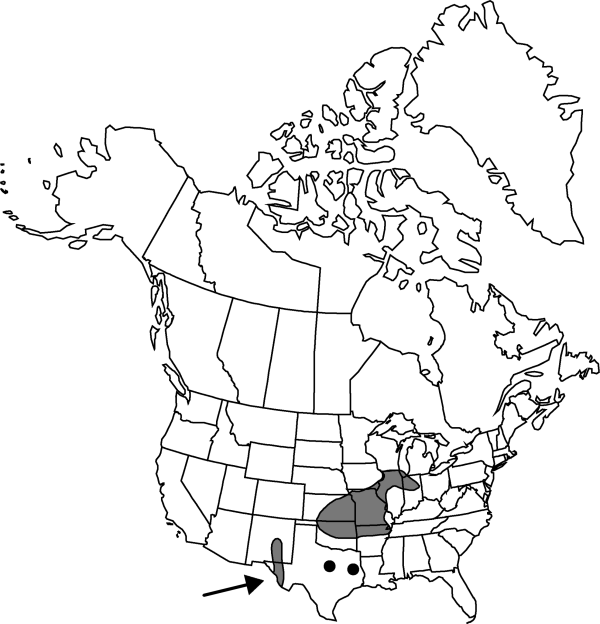Difference between revisions of "Chenopodium pallescens"
in N. L. Britton et al., N. Amer. Fl. 21: 15. 1916.
FNA>Volume Importer |
FNA>Volume Importer |
Revision as of 20:01, 24 September 2019
Stems erect, much-branched from shortly above base, 3–6.5 dm, glabrate or sparsely and finely farinose; branches ascending to spreading. Leaves nonaromatic; blade linear, 1-veined, 1–3.5 × 0.1–0.3 cm, somewhat fleshy, cuneate, margins entire, apex obtuse to acute, glabrate or sparsely farinose abaxially. Inflorescences glomerules in terminal and axillary panicles or cymes of spikes, 4–9 × 5–9 cm; glomerules widely spaced, maturing irregularly; bracts leaflike. Flowers: perianth segments 5, distinct nearly to base; lobes ovate, 0.9–1.1 × 0.9–1.1 mm, apex acute to rounded, carinate, slightly farinose, completely enclosing fruit; stamens 5; stigmas 2, 0.1 mm. Achenes ovoid; pericarp adherent, black, finely tuberculate. Seeds round, 1.4–1.6 mm diam., margins rounded; seed coat black, rugulate. 2n = 18.
Phenology: Fruiting early–late summer.
Habitat: Open stony or sandy wastelands
Elevation: 200-1100 m
Distribution

Ark., Ill., Ind., Kans., Mo., N.Mex., Okla., Tex.
Discussion
Selected References
None.